Is this the most chemically complicated drink in the world? Victoria Gill attempts to unlock some of the mysteries of Scotch malt whisky
Is this the most chemically complicated drink in the world? Victoria Gill attempts to unlock some of the mysteries of Scotch malt whisky
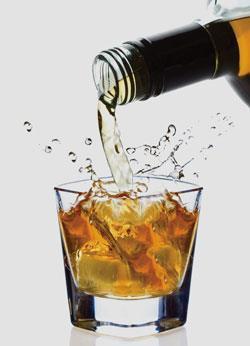
When I worked in a tiny Edinburgh pub, I occasionally incurred the wrath of the regulars when the water jug sat on the bar wasn’t at room temperature by the time they wanted their whisky. So I’ve long been eager to find out if there’s any chemical truth behind this received bar wisdom, and similar whisky lore.
I’ve heard much postulating about ’releasing the flavours’, so during my visit to Edinburgh’s Scotch Whisky Research Institute (SWRI), I hoped the real experts might teach me how to make it - or fake it - as a whisky connoisseur, so that I could smugly explain to my friends in the pub exactly how one should dilute one’s whisky - and more importantly, why.
But embarking on a whirlwind tour of whisky chemistry raised far more questions than I could have predicted. Like the heady, aromatic spirit itself, it’s far from simple. There’s no single chemical composition to describe a whisky, so there’s no single way to explain what exactly happens in your glass when you add water, ice or even (heaven forfend) cola.
Making flavour
Whiskies contain hundreds of compounds, including fatty acids, esters, alcohols, and aldehydes, in a wide range of concentrations. According to Paul Hughes, director of the International Centre for Brewing and Distilling (ICBD) at Heriot-Watt University in Edinburgh, the most important flavours in a whisky come from ’the raw materials, the distillation process, and the maturation’. So that’s the whole whisky-making process, then - and there’s just no narrowing it down.
To begin at the beginning, we need to go back to the raw materials. That’s Scotch whisky 10, 12, 16 or more years before it’s poured into your glass. The Scotch Whisky Act quite literally lays down the law about raw materials and the production process.1 Scotch malt whisky is made from 100 per cent malted barley - grain that has been germinated very briefly, releasing the enzymes that convert starch into the sugar that eventually becomes alcohol.
Whisky-producers start with a mash of malt and water. (Under the Act, distillers must use that water as it arrives at their distillery, untreated in any way). The aim is to turn as much of the grain’s starch into sugar as possible, for the highest alcohol yield.
The strong sugar solution is taken from the mash, and yeast is added for fermentation. This takes about 72 hours, after which the alcoholic solution - or wash - goes for distillation.
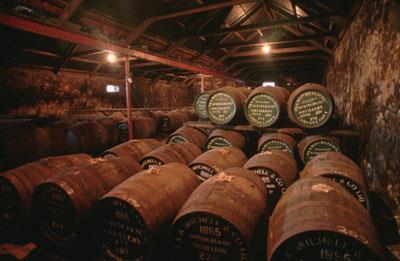
This is where those impressive, bulbous copper stills come in. Distillation is essentially very simple - heating the mixture to separate it into fractions based on their volatility - although the copper also catalyses some important reactions on the side. And as with any scaled-up process, there are a lot of variables. Reflux, for example, is determined by the neck of the still, so its shape is very important, and each distillery designs its own.
’Copper catalyses the reactions you want most in distillation - especially those reactions that remove sulfurous compounds,’ explains Craig Owen, a chemist and laboratory manager at the SWRI.
The research at the SWRI is funded by its members - Scotch malt whisky producers -who are constantly refining the efficiency of their processes. ’What distilleries are looking for is continuity,’ says Owen. ’They want to understand each part of the process, so that if anything starts to drift they know exactly where the problem will be - to get it back on track again.’
Distillation of the spirit gives three fractions - the foreshots that contain the highly volatile components such as acetaldehyde and ethyl acetate, the spirit fraction that will go on to be matured into Scotch, and the feints which contain the low volatility compounds, including phenols and many nitrogen-containing compounds. Foreshots and feints are removed but, since they contain alcohol, they are recycled and redistilled.
’Most Scotch whisky is distilled twice,’ explains Brian Eaton, senior teaching fellow at the ICBD. ’That’s a key difference between Irish whiskey and Scotch. Irish whiskey is triple-distilled, and that’s a big marketing point - its purity. But the thing about double-distilling is the flavour compounds that remain in the whisky. You could say that the aim with Scotch whisky is to distil it just enough.’
The spice of life
There are 92 malt distilleries in Scotland, all unique. Each takes a slightly different fraction during distillation - so each spirit is chemically different before it even gets into the cask to mature. This colourless liquid already contains some of the compounds that are evident in the final flavour - phenols, esters, lactones, aldehydes some sulfur and nitrogen-containing compounds.
But the cask is where the really interesting stuff happens - with the maturation process finely tuned to each individual whisky. ’When you mature a Scotch, you’re trying to balance the spirit character with the maturation character,’ says Eaton. ’Some may be matured for eight years, but most of the very smoky malts are matured for 12 to 16 years - because it takes longer to get the balance right.’
Most casks are made of American white oak, and have already been used once to make bourbon. ’The American bourbon industry uses new casks every time, so it’s a cheap and efficient way to buy them,’ says Eaton. Bourbon-making is also a good pre-treatment for the casks. White oak contains a lot of vanillin - the compound responsible for the sweet, vanilla note that is a signature of bourbon. Making bourbon extracts a lot of the vanillin from the casks, and only then are they ready for Scotch.
All casks must be less than 700 litre capacity, because much of the maturation chemistry depends on good contact with the wood. Three types of reaction happen in the cask - additive, subtractive and interactive. In subtractive reactions, compounds are lost through the timber - including the pungent sulfur compounds, such as dimethyl sulfide.
And as oxygen diffuses into the cask, reactions take place between the molecules in the spirit, and between the spirit and the wood. Alcohols and aldehydes are oxidised, and acids react with ethanol to form esters - which are some of the most aromatic of whisky flavour compounds.
The casks are often fired to char the inside. The resulting layer of active carbon on the inner surface removes some unwanted compounds, and charring starts the breakdown of lignin in the wood.
’Lignin undergoes what’s been termed ethanolysis,’ says John Piggott from the University of Strathclyde. ’Ethanol reacts with the lignin to break it down into some of the important flavour compounds, such as aromatic aldehydes.’ Piggott has compared charred with uncharred oak in the maturation of Scotch malt whisky, and found that charring increased the production of whisky lactones (cis - and trans -methyloctalactone) - fruity flavour compounds often described as smelling like coconut.2
And it’s maturation in timber casks that gives the whisky its golden colour. Melanoidins - from the breakdown of cellulose - help to brown the spirit. And some distilleries use old sherry or rum casks, which also darken the whisky, as well as contributing to its flavour. The only additive allowed, apart from water, is caramel, which can be added to bring the whisky to a standard colour.
Smoky notes
Not all distilleries smoke their malt - but some, including Laphroaig, Ardbeg and Lagavulin, all on the Scottish island of Islay, are famous for it. It’s a practice derived from the days when people would dry out their malted barley over a peat-fuelled fire, simply because peat was an easily and locally accessible fuel. Phenolic compounds transfered from the peat give these whiskies their signature smoky flavour.
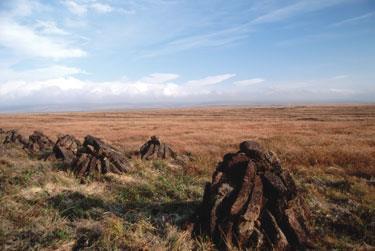
But even peat chemistry is complex. Barry Harrison, a distillation researcher at the SWRI, has studied different peats and found that the chemical composition of a peat bog depends on its geographical location. ’So I tried to find out if we could match that to chemical fingerprint of the spirit,’ says Harrison.
He dug peat samples from six locations across Scotland - three of which were peat bogs on Islay. ’I smoked malt in the fume cupboard in a lab, then distilled my own spirit with it.’ Harrison used a combination of analytical techniques to study his peat samples and smoked malt, and even volunteer nosers to test his lab-made spirit.
He found not only that peat from different bogs could be distinguished by its chemical fingerprint, but that the chemical fingerprint of a bog was still distinguishable in the final spirit. It’s just one example of a practice steeped in tradition that plays a part in the mysterious chemistry of malt whisky.4
Age is everything
The Act states that whisky is not Scotch whisky until it has been matured for at least three years. And that it must be matured in Scotland. ’This isn’t the industry being protectionist,’ says Eaton. ’It’s down to the climate - it’s cold and damp, which affects maturation. In the US, the ethanol concentration in the cask goes up because it’s hot and dry, here it goes down.’

Once a whisky has matured, it is blended and diluted for bottling - cask strength whisky can be more than 60 per cent ethanol, and the final bottled spirit is 40 per cent. Each distillery has a master blender - a person able to detect hundreds of flavour compounds by nose alone. This is still a talent no piece of analytical equipment can match, and everyone interviewed for a job at the SWRI is asked to take a smelling test to see if they could join the institute’s panel of 19 nosers.
Single malts are usually blended from several casks - all from the same distillery - to establish just the right flavour. The age on the bottle indicates the youngest whisky in that blend.
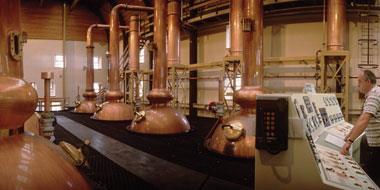
Eaton says the belief that single malt whiskies are far superior to what we commonly refer to as blended whiskies is something of a misconception. ’From around 1890 to the 1960s everyone drank blended whisky,’ says Eaton. The late 1800s are significant because an aphid-related pest called phylloxera, accidently imported from America, had wiped out the grapevines across France and the rest of Europe.
’People in the UK who drank brandy couldn’t get it, so they looked to Scotland where they were making this very fiery spirit called malt whisky. This was too strong for most people, so they started making grain whisky - distilled from a mixture of whole grain cereals, usually wheat or maize, and the malted barley that produces the necessary enzymes.
’Grain whisky is distilled to a higher alcoholic strength, and it is blander. By blending the grain whisky with the malt whisky, they made a spirit that was acceptable for the would-be brandy drinkers in the UK to have as an after-dinner drink. So people started drinking blended whisky.’
It was only when the first single malt was marketed by Glenfiddich in the 1960s that single malts became more widely available. And today they represent about 5 per cent of the whisky market.
’In a single malt you get a narrow band of flavour - peaty, waxy, meaty sulfur, grassy - so if you like that flavour, you find the malt that’s to your exact taste,’ says Eaton. ’A blender may take 35 different malts and two to three grains, and blends them to give all the different characteristics. People think blends are cheap and nasty and they’re not, many of them are superb.’
How to drink whisky
Just as diverse and complex are the ways in which whisky is consumed. But single malt purists will often tell you to add just a little room temperature water. So is that the ’right way’ to drink whisky?
’It’s personal preference - there are no instructions on the bottle that say "dilute to taste",’ Owen points out diplomatically. ’It’s partly about practicality. When we’re nosing the whisky, it’s diluted to 20 per cent [ethanol concentration] because at 40 per cent, after nosing a few whiskies, you wouldn’t be able to smell anything.’ Since the whisky producers rely very much on teams of nosers for their quality control (whisky producers’ master blenders often have their olfactory equipment insured for large sums) avoiding numbing the nosers’ precious noses is very important.
’With sprits, there’s a magic dilution of 17 per cent where you have a continuous phase of water and ethanol,’ adds Hughes. ’Otherwise you get some clustering - pockets of ethanol where the more ethanol-soluble compounds will gather.’
Perhaps this is something I can finally quantify - you need just the right amount of water to bring the spirit to this continuous phase. But, as always, it’s far more complicated for Scotch, as Hughes explains: ’Whisky is not ethanol and water alone. Once you start to introduce all the other components, the simple dynamic of ethanol and water mixtures is affected. So it’s much trickier to put a critical dilution on whisky.’
Piggott has tested the influence of dilution on the sensory impact of a whisky. His team at Strathclyde measured the compounds occupying the ’headspace’ above the whisky - that’s the part you stick your nose into to take in all of those aromatic notes. And dilution, it seems, is not just about the oft-quoted release of flavour compounds - it releases some but masks others.3
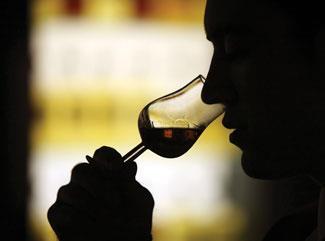
’If you increase the water content, you reduce the solubility of some long-chain compounds - such as esters,’ he explains. ’You also increase the volatility of some compounds, especially hydrophobic ones. While phenols, for example - the smoky compounds - are particularly water-soluble, so you’d expect to reduce the volatility of those as you dilute. Nitrogen-containing compounds too - they’re the roasted nut and cereal flavours - would be reduced.’ So if you like the cereal tones or that smoked peaty aroma, drink your malt whisky neat.
And the insistence upon room temperature water? ’Ice or very cold water will reduce the volatility of many flavour compounds - it keeps the flavour in the liquid, so you may not get the aromas, but you’ll still get the taste,’ says Hughes.
One guaranteed effect of dilution for every whisky is that it diminishes the ethanol concentration. But whether that reliably reduces the alcoholic burn depends, once again, on the whisky you’re drinking. ’If you dilute to 20 per cent ethanol, you reduce the pungency, so for younger spirits that would seem to be a good idea - to get more out of the rest of the flavour. But something very strange goes on as whisky matures.’
Piggott’s experiments have shown some whiskies are not as pungent as they should be given their ethanol concentration. ’If you plot the amount of ethanol in the head space against pungency [detected by nosing], you would normally see a direct correlation. But we found that some whiskies were less pungent than they should have been - and that seemed to tie in with maturity, which links with the popular view that you should drink well-matured malts neat.’
’At tastings at the Scottish Malt Whisky Society, they tend to taste cask-strength whiskies, diluting them to taste,’ says Hughes. ’When you add water to one it tastes much better, but add water to another and it might taste far worse. For example, heavier whiskies that have strong sulfur notes -those compounds are released when you dilute the whisky, and most people find them unpleasant.’
Only Hughes will be drawn on the best way to drink a whisky, and his advice is surprisingly specific. ’The master blender at the Talisker distillery once told me 18 year old Talisker with vanilla ice cream and pepper was the best combination,’ says Hughes. ’I just wonder how on Earth they found that out.’
’Blue cheese or chocolate often go well with whisky,’ says Owen. ’But it’s entirely down to personal taste. In China it’s often mixed with green tea. In Spain many people drink it with a mixer, like cola.’
And according to one well-known Scottish joke, that’s actually the only way to drink the stuff - cola, that is.
References
1 The Scotch Whisky Act
2 J M Conner, A Paterson and J R Piggott, J. Sci. Food and Agric., 2006, 62, 169 (DOI: 10.1002/jsfa.2740620210)
3 J M Conner, A Paterson and J R Piggott, J. Sci. Food Agric., 1999, 79, 1015
4 B Harrison et al, J. Inst. Brew., 2006, 112, 333

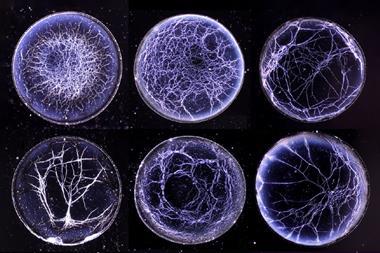
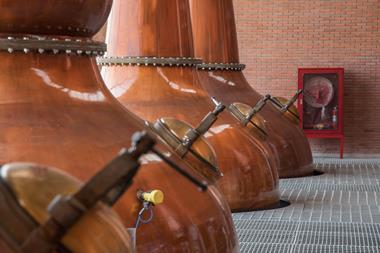
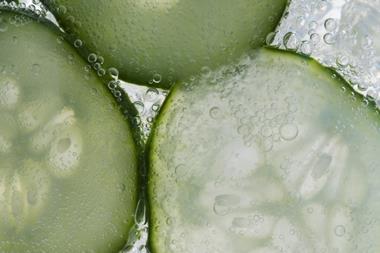
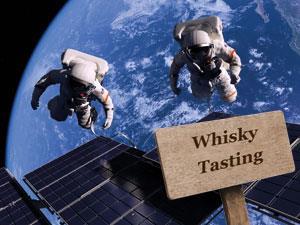






No comments yet